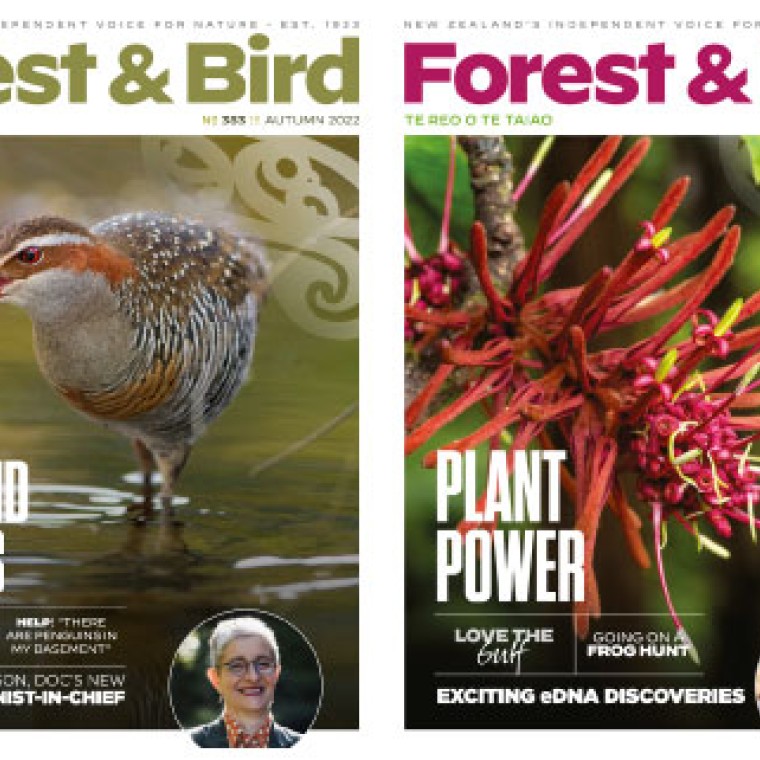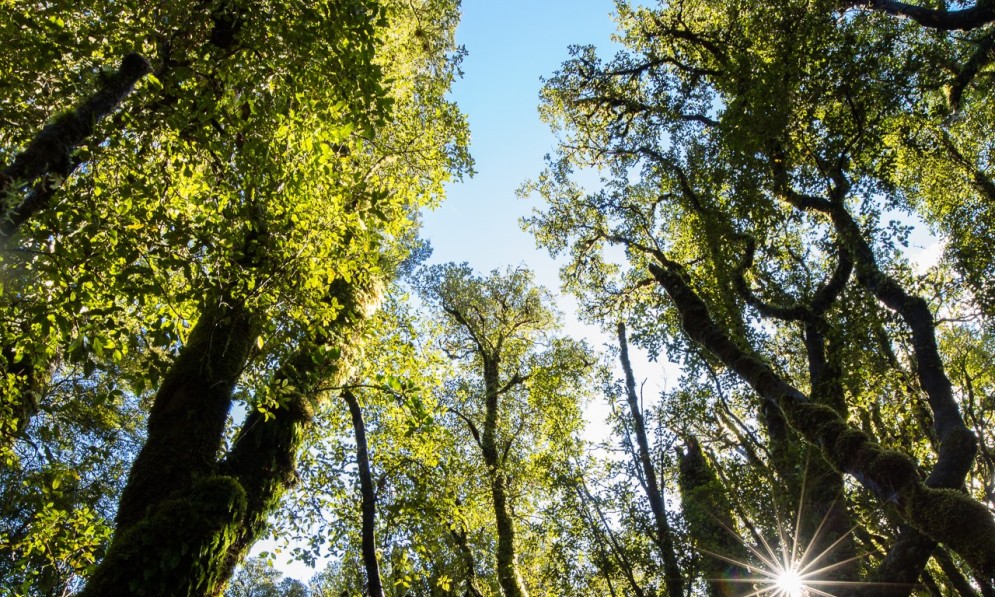Our native forests are bigger climate heroes than we realised. By Caroline Wood
Forest & Bird magazine
A version of this story was first published in the Spring 2025 issue of Forest & Bird magazine.
We have been underestimating the amount of carbon taken up by New Zealand’s mature indigenous forests for at least a decade, according to a new study.
Instead of being roughly carbon neutral, New Zealand’s carbon sink is removing more CO2 than originally thought, particularly in Fiordland and parts of the West Coast.
The significant findings could influence New Zealand’s climate policies, including greenhouse gas reporting, carbon credit costs, and land use.
“It was thought that some areas and land use types were in a near-balance state with the absorption and release of CO2,” said study leader Dr Beata Bukosa, of Earth Sciences New Zealand (formerly NIWA).
“Earlier estimates of how much carbon was removed by New Zealand land ecosystems ranged from a net 24 to 118 million tonnes a year.
“Our research found that New Zealand’s natural environment absorbed approximately 171 million tonnes of CO2 annually.”
Using advanced modelling and a supercomputer, the researchers examined a decade of atmospheric data, from 2011 to 2020, to better estimate the amount of CO2 absorbed by New Zealand’s land ecosystems.
The team worked with collaborators at GNS Science and Manaaki Whenua, as well as other New Zealand and overseas universities and institutes.
The research follows a pilot study in 2017, which also suggested indigenous forest in Fiordland might be absorbing more CO2 than expected.

Beata Bukosa
“That study was based on only three years of data, and we weren’t sure if it was just a transient effect related to the climatic conditions or if the effect was confined to Fiordland,” explained Beata.
“Our new study shows the carbon sink is more widespread than we thought, particularly across the South Island, with greater uptake of CO2 extending up the West Coast.
“With improvements in our modelling techniques and data coverage, we’ve now shown the extra carbon uptake has persisted for at least a decade.”
New Zealand was the first country to develop the capability to infer national CO2 emissions from atmospheric data and has since supported other countries to develop similar capability.
“The findings help build a clearer picture of the role New Zealand’s natural systems play in absorbing emissions from the atmosphere,” said co-author Dr Andrea Brandon, of the Ministry for the Environment.
The study’s authors say the findings have important implications for New Zealand’s tracking of carbon emissions and climate policies.
However, further work will be needed before they can be included in official emissions reporting.
“The findings from this study indicate there may be additional carbon uptake somewhere in the system that we are currently not tracking,” added Andrea.
“We need to identify what we are missing so that we can further refine our inventory methods to capture it.”
“Projections suggest New Zealand will need 84 million tonnes of emissions reductions on top of what can be done at home to meet its 2030 international commitments under the Paris Agreement,” said Dr Sara Mikaloff-Fletcher, principal scientist at Earth Sciences NZ.
“In addition to reducing the need for overseas offsets, better management of our native forests and other lands could enable New Zealand to be long-term stewards of our carbon sinks and offer magnificent biodiversity co-benefits.”
The results were published in the journal Atmospheric Chemistry and Physics.

Introduced non-native browsing pests, such as this wild deer, are damaging New Zealand’s carbon sinks. Image Neil Foster
Forests for Climate
Forest & Bird is calling on the government to support the full climate-fighting potential of our native forests.
As well as locking in carbon and helping reduce emissions, healthy pest-free native forest and shrublands can prevent erosion and sedimentation in our waterways and restore biodiversity.
“This new research proves our native forests are working hard to draw down vast amounts of carbon from the atmosphere,” said Forest & Bird’s native forest advocate Dean Baigent-Mercer.
“But most of these forests are under constant attack by millions of pest deer, pigs, goats, wallabies, and possums. They are literally eating our forests to death. They kill the trees, which rot and release carbon dioxide, which feeds more climate change.
“The Earth Sciences NZ-led study is a wake-up call and reinforces the urgent need for large-scale co-ordinated action to knock down pest animals to low levels, and keep them low, so our native forests have the greatest opportunity to lock in even more carbon each year.
“This is the best spend for taxpayers’ money, not sending it overseas to pay other countries to lock in carbon. We need to back our own native forests.”
Forest & Bird is calling on the government to act on this new research to ensure our native forests can meet their full carbon-capturing potential, by:
- Investing in further research to improve how we measure carbon sequestration and emissions in native forests.
- Funding large-scale co-ordinated pest control on public and private land to protect vital natural carbon sinks.
- Raising awareness among landowners of the benefits of protecting and restoring native forests to boost carbon sequestration and biodiversity.
- Rejecting the Herds of Special Interest (HOSI) proposals put forward by the Minister of Hunting and Fishing that would see introduced pests given specially protected status within national parks and other important conservation areas.
Choose nature-based solutions: Looking after our native forests and shrublands so they absorb more carbon helps mitigate climate change by reducing the amount of CO2, a major greenhouse gas, in the atmosphere. This process, known as carbon sequestration, can occur naturally through photosynthesis in plants. Increasing carbon absorption helps stabilise the climate, improve air and water quality, and protect natural resources. For more information, see www.forestandbird.org.nz/campaigns/choose-nature-based-solutions

